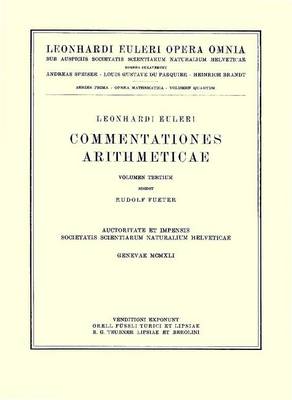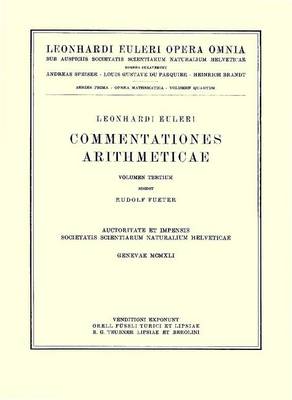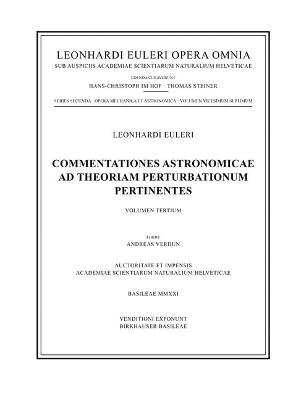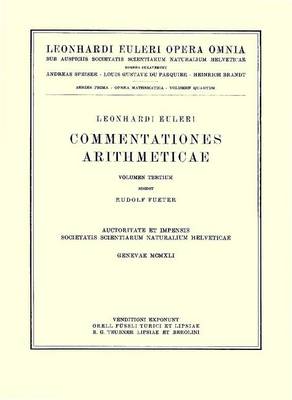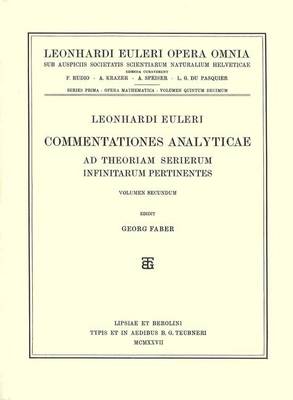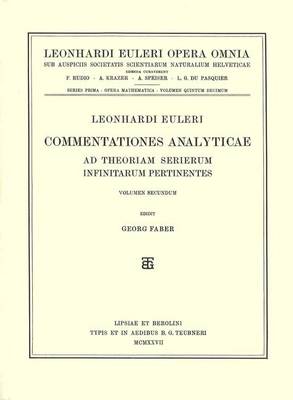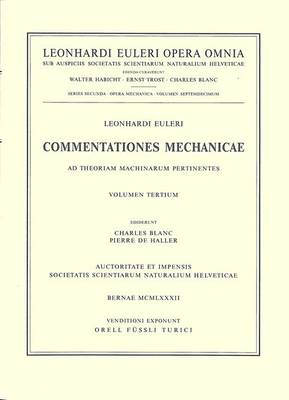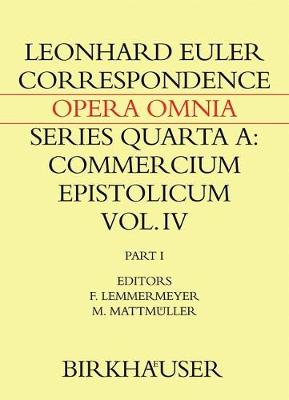Leonhard Euler, Opera Omnia
34 total works
1 / 24
1 / 4
1 / 12
1 / 1-29
Leonhard Euler Opera Omnia / Series prima: Opera mathematica
by Leonhard Euler
1 / 3
1 / 11
1 / 8
2 / 27
Commentationes astronomicae ad theoriam perturbationum pertinentes 3rd part
by Leonhard Euler
Dieses Problem behandelt Euler in einigen der vorliegenden Abhandlungen nicht nur für Massenpunkte, sondern erstmals auch für ausgedehnte Himmelskörper. Die so verallgemeinerte Himmelsmechanik, die er als „mechanische Astronomie“ bezeichnete, prägte er massgebend. Dazu gehört unter anderem auch das Rotationsverhalten von Himmelskörpern unter dem Einfluss äusserer Gravitationskräfte, das er mit seinen berühmten Bewegungsgleichungen der Starrkörperrotation erfolgreich zu beschreiben vermochte.
1 / 5
1 / 16,2
Commentationes analyticae ad theoriam serierum infinitarum pertinentes 3rd part, 2nd section
by Leonhard Euler
1 / 15
Commentationes analyticae ad theoriam serierum infinitarum pertinentes 2nd part
by Leonhard Euler
1 / 16,1
Commentationes analyticae ad theoriam serierum infinitarum pertinentes 3rd part, 1st section
by Leonhard Euler
2 / 29
Commentationes astronomicae ad praecessionem et nutationem pertinentes. First part
by Leonhard Euler
4A / 4.1
Correspondence of Leonhard Euler with Christian Goldbach
by Leonhard Euler
When Leonhard Euler first arrived at the Russian Academy of Sciences, at the age of 20, his career was supported and promoted by the Academy's secretary, the Prussian jurist and amateur mathematician Christian Goldbach (1690-1764). Their encounter would grow into a lifelong friendship, as evinced by nearly 200 letters sent over 35 years.
This exchange - Euler's most substantial long-term correspondence - has now been edited for the first time with an English translation, ample commentary and documentary indices. These present an overview of 18th-century number theory, its sources and repercussions, many details of the protagonists' biographies, and a wealth of insights into academic life in St. Petersburg and Berlin between 1725 and 1765.
Part I includes an introduction and the original texts of the Euler-Goldbach letters, while Part II presents the English translations and documentary indices.

